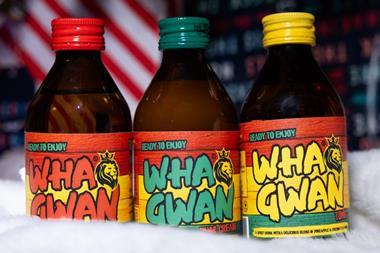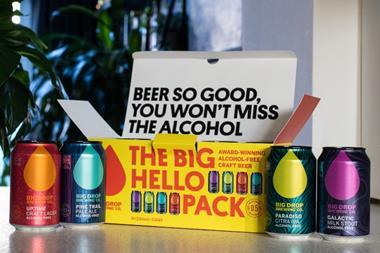It was always going to be a difficult year for breweries. There was no big sporting event all summer and the weather during what is usually one of the strongest sales periods of the year was so wet large parts of the country ended up under floodwater. So no surprise then that UK beer sales fell 5.2% in the first half of this year.
Unfortunately, this is no simple summer slump, according to Mintel, which has forecast a further 8% fall in sales over the next five years. So can anything be done to reverse the decline?
Even before the disastrous summer, brewers were facing tough trading conditions in the UK. It is a mature market and sales have fallen 5% since 2005 [Mintel], in line with the long-term shift from bars to the off-trade, where margins are tighter. These challenges have been compounded by the smoking ban, a rise in wine sales and the cider boom.
"The wider trend across food and drink of local, healthier and provenance-driven products has hit lager badly," says Katy Child, senior market analyst at Mintel.
"There is a lot more choice these days than when lager first arrived on the scene as a refreshing alternative to ale. Wine has lost its snobbishness and the popularity of rosé has opened up the category even further. Plus, cider has captured the refreshing corner of the market since its reinvention over ice. Brewers are going to have to learn lessons from cider on how to take a commodity category and turn it into a high-value one."
Those with a broader portfolio are more likely to do well, but innovation is key to survival, says Craig Clarkson, head of customer marketing, off-trade, at Scottish & Newcastle, which owns brands such as John Smith's, Kronenbourg 1664 and Foster's as well as Bulmers Original and Strongbow.
"The categories that survive will be the ones that innovate," he says. "We are really investing in NPD in lager, it is a key focus and other brewers think the same."
Much recent innovation has concentrated on chilled and super chilled but now brewers are tapping into new trends. There has been a lot of activity with lower and no-alcohol lagers, for instance.
"We are really focusing on this opportunity as consumers look for healthier products that taste good and have strong branding," says Tesco senior buying manager for BWS, Andrew Carpenter. "We've recently added a dozen new lines to our lower-alcohol beer category (below 3% abv) and think that gives us a really credible offering."
Carpenter also highlights the raft of new flavoured beers mostly aimed at women, who could be the key to future growth.
"Products such as Becks Green Lemon and Foster's Twist as well as Cobra Bite are exciting developments for the category with generally lower abv, female-friendly packaging and a refreshing taste," he says. "It's not all doom and gloom. People are broadening their portfolios. I'm not convinced this is the beginning of the end for lager."
Other key trends include beer and food matching, which several lager brands are now trying, while the growth in imported beers is introducing value to the category.
So though lager has yet to take a leaf out of cider's book, brewers remain confident. "We see a rosy future for lager if brewers embrace these trends," said Bill Simcox, director of marketing at Coors Brewers. "Consumers are demanding light and refreshing drinks and lager fits perfectly into that. They are also more willing to pay more for more premium, authentic experiences."
Failing that - lager over ice anyone?n









No comments yet